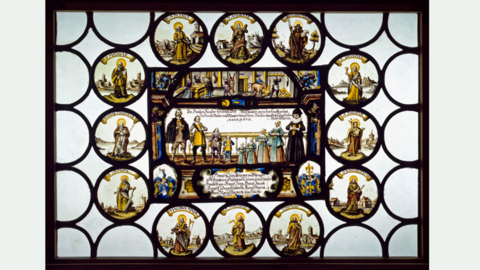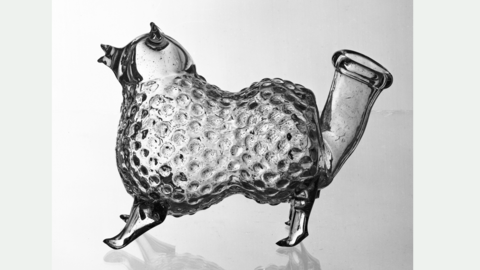The Munich art market was one of the most important suppliers of artwork in the first half of the 20th century of the Hessisches Landesmuseum Darmstadt. In particular the firm of Hugo Helbing—that also maintained branches in Frankfurt am Main and Berlin—sold the museum at least 59 works between 1904 and 1934. These included sculptures, paintings, porcelain objects, a musical instrument, and small sculptures from Antiquity. Helbing was probably the largest auction house in Germany, besides being an art gallery offering over-the-counter sales. Starting in 1933, the auction house’s Jewish partners were subject to persecution by the National Socialist authorities. After Hugo Helbing was murdered in November 1938, his widow was forced to renounce her share of the firm. By then the firm’s partners had already left it and fled abroad.
In examining works with a Helbing provenance, it was therefore important to determine whether those acquired by the museum in 1933 and 1934 might have been sold under compulsion. Purchases at Frankfurt auctions from the estates of Louis Jay and Conrad Binding required particular scrutiny in this respect. The main information sources here are the physical copies of annotated auction catalogues from the firm’s book-keeping records, of which about 1,000 have survived. These have recently been made available online by Heidelberg Digital (HEIDI). A search of the catalogues has revealed no evidence of confiscation resulting from National Socialist persecution.
At the same time, the question arises as to why the museum purchased nothing further from Helbing after 1934. After this date, the museum also ceased making purchases from the Mainz art dealers Karl Bloch and David Reiling, who were also subject to antisemitic persecution. Was the museum forbidden—as for instance was the case in Munich—to purchase objects from firms declared to be “Jewish”? Following the complete loss of the museum’s—and many public—archives, this question can no longer be answered with certainty.
Of the original 59 objects directly acquired from Helbing, at least six were destroyed in World War II or stolen. A further 24 objects in the museum passed through the firm of Helbing at some stage of their provenance, entering the collection before 1933 via intermediate owners. Currently a total of 73 objects with Helbing provenance have been identified. As not all the museum’s inventory ledgers survived the Second World War, the number could well be higher. It is also possible that other objects in the collection have a hitherto unrecognised Helbing provenance.

